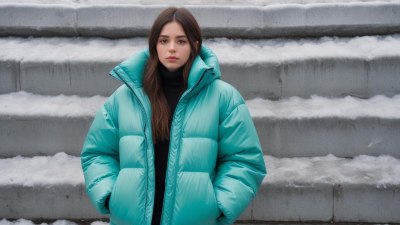The Existential Crisis of Wearing a Puffy Jacket Too Early
Explore the social and personal ramifications of wearing a puffy jacket too soon in the season.

This image was created with the assistance of Freepik
As the seasons shift and the air grows crisp, the choice of outerwear becomes a subtle reflection of our internal states. The puffy jacket, a garment synonymous with warmth and comfort, often becomes a symbol of social timing and seasonal appropriateness. However, the moment one decides to don a puffy jacket too early in fall can trigger an existential crisis that transcends mere fashion choices. For many, this seemingly trivial action sparks deep reflections about self-identity, social norms, and the passage of time.
The Symbolism of Outerwear
Outerwear has long held significance beyond its functional role. It serves as a protective barrier against the elements, yet it also acts as a canvas for personal expression. The puffy jacket has evolved from a utilitarian piece into a fashion statement, embodying concepts of comfort, practicality, and sometimes, nostalgia. When one decides to wear it in season's early days, it can evoke feelings of vulnerability and insecurity, leading to a broader contemplation of societal expectations.
Social Timing and Clothing Choices
The timing of wearing a puffy jacket hinges on societal cues. As temperatures begin to drop, a kaleidoscope of clothing options emerges. Yet, the desire to be the first to adapt to the changing weather can create a tension between personal comfort and social conformity. There exists an unspoken agreement within communities about what is deemed appropriate attire for a given season. Wearing a puffy jacket too early can inadvertently mark one as an outlier, provoking uncertainty about one’s understanding of social norms and communal values.
Personal Reflection and Identity
Wearing a puffy jacket in the fall months, especially when temperatures fluctuate unpredictably, becomes a battleground for personal identity. For some, it represents an assertion of individuality, a bold statement against the current tide of social expectations. For others, it raises questions about the perceived judgment from peers—are they seen as overly eager or oddly out of sync with environmental cues? This duality can lead to an internal conflict, a layered crisis concerning self-image and external perception.
The Influence of Weather Patterns
Weather plays a pivotal role in the narrative surrounding the puffy jacket. In many regions, unpredictable weather can lead to confusion about when it is appropriate to wear certain garments. The existential crisis intensifies when one follows their instinct for warmth and comfort but is met with the disapproving glances or smirks of others. This disconnect between personal perception of comfort and communal standards challenges individuals to reconsider their choices and motivations.
Cultural Representations of Clothing
Cultural frameworks shape our interpretations of clothing choices. Various cultures celebrate transitions in seasons with rituals, clothing swaps, and communal gatherings to usher in new phases of life. The widespread availability and influence of puffy jackets in modern fashion can be seen as a reflection of globalization, wherein a single item carries myriad meanings across different contexts. Adopting it too early can invoke feelings of cultural dislocation; an urgent desire to belong collides with the reality of wearing a misunderstood symbol too soon.
Fashion Cycles and Trends
Fashion is riddled with cycles—what is considered trendy one year may fall out of favor the next. The puffy jacket, particularly when seen prematurely, can symbolize a stubborn resistance to changing tides. In moments when society encourages the slow embrace of seasonal attire, opting for a puffy jacket early could denote ignorance of current trends or possibly an endearing stubbornness, leading to overarching questions about conformity versus autonomy in fashion.
Psychological Aspects of Clothing Choices
Your relationship with your clothing often provides insight into your psychological state. Clothes can impact mood and confidence levels, and the act of wearing a puffy jacket too early may herald a deeper desire for comfort in more ways than one. Psychologically speaking, it may represent a longing for coziness in a time of uncertainty. The warm embrace of the jacket can become a metaphor for emotional security, allowing individuals to explore their vulnerabilities in a society that emphasizes outward appearance.
Social Media and Influence
In an age dominated by social media, the immediate feedback loop of likes, comments, and shares exacerbates the existential crisis of wearing a puffy jacket early. Pictures of influencers previewing their winter wardrobes often create benchmarks for the general populace. What happens when you are caught in a moment unprepared, wearing your puffy jacket before its time? The fear of being meme-ified looms large; suddenly, a comfort wear becomes a subject of commentary, questioning personal choices and societal alignment.
The Role of Seasonality in Mental Health
As the seasons shift, so do our emotional landscapes. Studies indicate that seasonal affective disorder (SAD) can lead to heightened sensitivity concerning weather and attire. Wearing a puffy jacket too early becomes a coping mechanism against the impending winter blues—a protective shield against emotional discomfort. Navigating social perceptions while grappling with personal mental health can create a spiral of self-doubt and existential questioning that reverberates far beyond fabric and fit.
Finding Comfort in Conformity
While challenges arise from early puffy jacket wear, there can also be solace found in conformity to social norms. Surveying one’s surroundings can evoke a profound sense of belonging; when everyone adheres to a collective understanding of seasonal attire, it naturally fosters community. Yet for some, there is still the yearning to break from the mold, prompting inquiry into how much importance should be placed on fitting into established patterns of behavior against the innate desire for self-expression.
Embracing Your Choices
Wearing a puffy jacket too early can serve as a lens to explore the intersections of social norms, personal identity, and cultural perceptions. It compels individuals to navigate a delicate balance of comfort and conformity, challenging perceptions that extend far beyond a question of fashion. In the end, the existential crisis tied to this seemingly simple article of clothing may ignites greater contemplations about belonging, acceptability, and the nature of our choices. Embracing your choices and the narratives they craft is essential—especially when it comes to how we choose to present our identities in an ever-evolving society.











